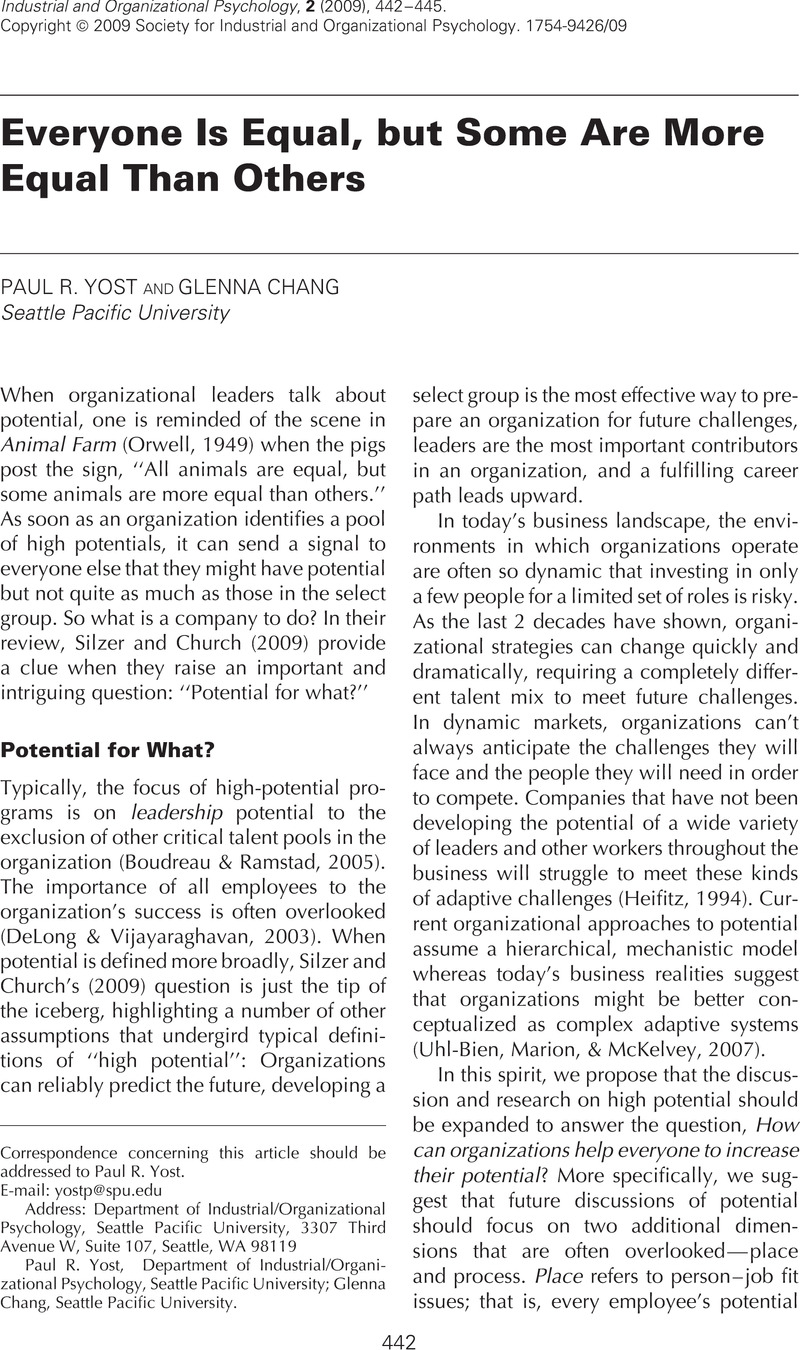Crossref Citations
This article has been cited by the following publications. This list is generated based on data provided by Crossref.
Silzer, Rob
and
Church, Allan H.
2009.
The Potential for Potential.
Industrial and Organizational Psychology,
Vol. 2,
Issue. 4,
p.
446.
Meyers, M. Christina
van Woerkom, Marianne
and
Dries, Nicky
2013.
Talent — Innate or acquired? Theoretical considerations and their implications for talent management.
Human Resource Management Review,
Vol. 23,
Issue. 4,
p.
305.
Gallardo-Gallardo, Eva
Dries, Nicky
and
González-Cruz, Tomás F.
2013.
What is the meaning of ‘talent’ in the world of work?.
Human Resource Management Review,
Vol. 23,
Issue. 4,
p.
290.
Sparrow, Paul
Farndale, Elaine
and
Scullion, Hugh
2013.
An empirical study of the role of the corporate HR function in global talent management in professional and financial service firms in the global financial crisis.
The International Journal of Human Resource Management,
Vol. 24,
Issue. 9,
p.
1777.
Meyers, Maria Christina
and
van Woerkom, Marianne
2014.
The influence of underlying philosophies on talent management: Theory, implications for practice, and research agenda.
Journal of World Business,
Vol. 49,
Issue. 2,
p.
192.
Kulkarni, Mukta
and
Scullion, Hugh
2015.
Talent management activities of disability training and placement agencies in India.
The International Journal of Human Resource Management,
Vol. 26,
Issue. 9,
p.
1169.
Skuza, Agnieszka
and
Scullion, Hugh
2015.
International Human Resources Management.
p.
1.
Caracol, Carla
and
Dias, Ivo
2015.
New Contributions in Information Systems and Technologies.
Vol. 354,
Issue. ,
p.
93.
Beamond, Maria Teresa
Farndale, Elaine
and
Härtel, Charmine E.J.
2016.
MNE translation of corporate talent management strategies to subsidiaries in emerging economies.
Journal of World Business,
Vol. 51,
Issue. 4,
p.
499.
Kasemsap, Kijpokin
2016.
Managerial Strategies and Practice in the Asian Business Sector.
p.
238.
Lopes, Susana Almeida
2016.
High performers are not superheroes: bridging exclusive and inclusive talent management approaches for law firm sustainability.
International Journal of the Legal Profession,
Vol. 23,
Issue. 2,
p.
207.
Kasemsap, Kijpokin
2016.
Project Management.
p.
178.
Kasemsap, Kijpokin
2017.
Effective Talent Management Strategies for Organizational Success.
p.
260.
Bolander, Pernilla
Werr, Andreas
and
Asplund, Kajsa
2017.
The practice of talent management: a framework and typology.
Personnel Review,
Vol. 46,
Issue. 8,
p.
1523.
Terramorsi, Patrice
Fabiani, Thierry
and
Albertini, Thérèse
2018.
De l’expertise à l’audace : comprendre les représentations pour développer les talents.
Question(s) de management,
Vol. n° 20,
Issue. 1,
p.
89.
Adebola, Sunday
2019.
Managing Talent.
p.
187.
Hughes, Claretha
2019.
Workforce Inter-Personnel Diversity.
p.
81.
Golubovskaya, Maria
Solnet, David
and
Robinson, Richard N.S.
2019.
Recalibrating talent management for hospitality: a youth development perspective.
International Journal of Contemporary Hospitality Management,
Vol. 31,
Issue. 10,
p.
4105.
Hughes, Claretha
2019.
Workforce Inter-Personnel Diversity.
p.
47.
Pérez-Conesa, Francisco J.
Romeo, Marina
and
Yepes-Baldó, Montserrat
2020.
Labour inclusion of people with disabilities in Spain: the effect of policies and human resource management systems.
The International Journal of Human Resource Management,
Vol. 31,
Issue. 6,
p.
785.





